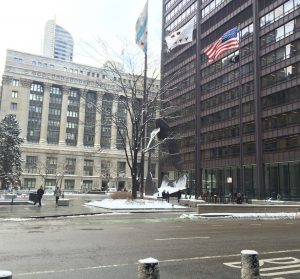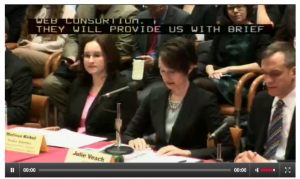Carly Suddoth, 30, is eking by as a bartender but lives with her sister in a $700-a-month, two-bedroom in Bridgeport. Making $300 a week, she is able to afford utilities and basic TV cable but acknowledges she has to give up her favorite pleasure: shopping.
While she gives her mother $120 a week to save for herself, she doesn’t believe she will ever afford a house.
Many Americans are finding affordable housing still beyond their reach. Advocacy groups are saying more government action is needed.
The National Low Income Housing Coalition, a non-profit housing advocacy group in Washington, D.C., released its annual housing report called “Out of Reach” in April.
The report looks at wages and rents in every state and calculates the amount of income a worker must earn to afford a rental unit. This calculation called a “housing wage” is the amount a person must earn in order to afford the market price for a two-bedroom apartment.
The national fair market rate for a two-bedroom is $900, or 6.9 percent higher this year. For an average renter to be able to afford this rent, without paying more than 30 percent of their income, they would have to work 50 hours a week and earn $17.32 an hour-more than three times the national minimum wage of $5.85.
In Illinois, the fair market value for a two-bedroom apartment is $844, according to the report. Not paying more than 30 percent of income on housing, a household must earn $2,813 monthly or $33,758 a year. This translates into a housing wage of $16.23 an hour. In Chicago, the housing wage is $18.15.
“I think what is happening now, because of the high number of foreclosures, the rental market is tightening up,” said Sharon Price, director of policy at the National Housing Conference, an organization for affordable housing based in Washington D.C.
She said in the past there was a “trickle-down” effect where low-income families were able to afford older housing as new housing was developed. But now with families migrating toward urban areas and a slump in the real estate market, places that would normally be affordable are too expensive for low-income families.
“Unfortunately, the results were not unexpected,” said Bob Palmer, policy director at Housing Action Illinois, a non-profit housing advocacy organization in Chicago, who worked with NLIHC to develop the report.
Palmer said each year housing costs continue to increase at a much faster rate than household incomes. Palmer said supply, high demand and the foreclosure crisis are factors for the increase in rates.
Price said Washington advocacy groups would continue to lobby Congress to pass legislation to provide low-income families with more options.
“Overall, I think the problem is universal in most cities,” said Price. “Ideally what we would like to see is housing for all income levels.”
For more information on the “Out of Reach” report, visit NLIHC’s website at www.nlihc.org

![Reblog this post [with Zemanta]](http://img.zemanta.com/reblog_e.png?x-id=2b734a6a-1161-4202-b2a7-43ccd10d027e)










Be First to Comment